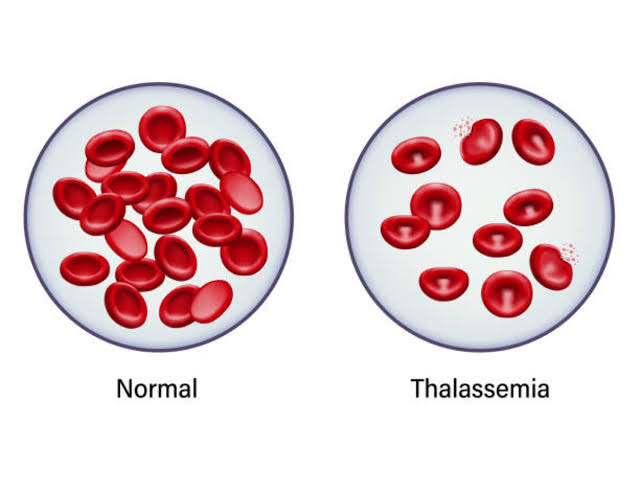Health Desk
Sandeep Dhand Ludhiana
Thalassemia Major, also known as Cooley’s Anemia, is a severe genetic blood disorder that affects the production of hemoglobin, the protein in red blood cells that carries oxygen throughout the body. This condition results in the body being unable to produce hemoglobin properly, leading to a lack of healthy red blood cells. Thalassemia Major is a lifelong condition that can be managed but not completely cured.

Symptoms and Signs
Symptoms of Thalassemia Major usually become evident within the first few months after birth. Some of the major signs include:
- Anemia: Due to the shortage of red blood cells, the body has a reduced capacity to carry oxygen, leading to fatigue and weakness.
- Jaundice: Yellowing of the skin and eyes due to the breakdown of red blood cells.
- Bone Deformities: Abnormal bone growth, particularly in the face and skull.
- Enlarged Organs: The spleen and liver may enlarge, causing various complications.
- Delayed Growth: Children with Thalassemia Major often experience slower growth and development compared to their peers.

Causes
Thalassemia Major is inherited in an autosomal recessive manner, meaning a child must inherit defective genes from both parents to develop the disease. These genes are responsible for the production of hemoglobin. When both parents are carriers of the Thalassemia Minor trait, there is a higher risk of their children being affected by Thalassemia Major.
Diagnosis
Diagnosis of Thalassemia Major involves several blood tests, including hemoglobin electrophoresis and genetic testing. These tests confirm the presence of abnormal hemoglobin and identify specific genetic mutations. Parental testing can also determine if a couple is at risk of having a child with Thalassemia Major.
Treatment
The primary treatment for Thalassemia Major is regular blood transfusions, which help maintain adequate levels of healthy red blood cells. These transfusions are typically required every few weeks. Alongside transfusions, iron chelation therapy is necessary to remove excess iron from the body, which accumulates due to frequent transfusions. In some cases, the spleen may be surgically removed to reduce complications from organ enlargement.
Bone marrow or stem cell transplants are potential curative options, but they come with significant risks and are only suitable for certain patients. These procedures involve replacing the defective bone marrow with healthy marrow from a compatible donor, ideally a sibling.
Prevention
Preventing Thalassemia Major involves genetic counseling and testing. Couples who are carriers of the Thalassemia trait should undergo genetic testing before starting a family to understand their risks. Prenatal testing can also detect Thalassemia Major in the fetus.
Conclusion
Thalassemia Major is a serious and challenging disease that requires lifelong management. However, with regular treatment and proper medical care, individuals with Thalassemia Major can lead productive lives. Awareness and education about this condition are crucial for early diagnosis and effective management. Advances in medical research continue to improve the quality of life for those affected by Thalassemia Major, offering hope for better treatments and potential cures in the future.
